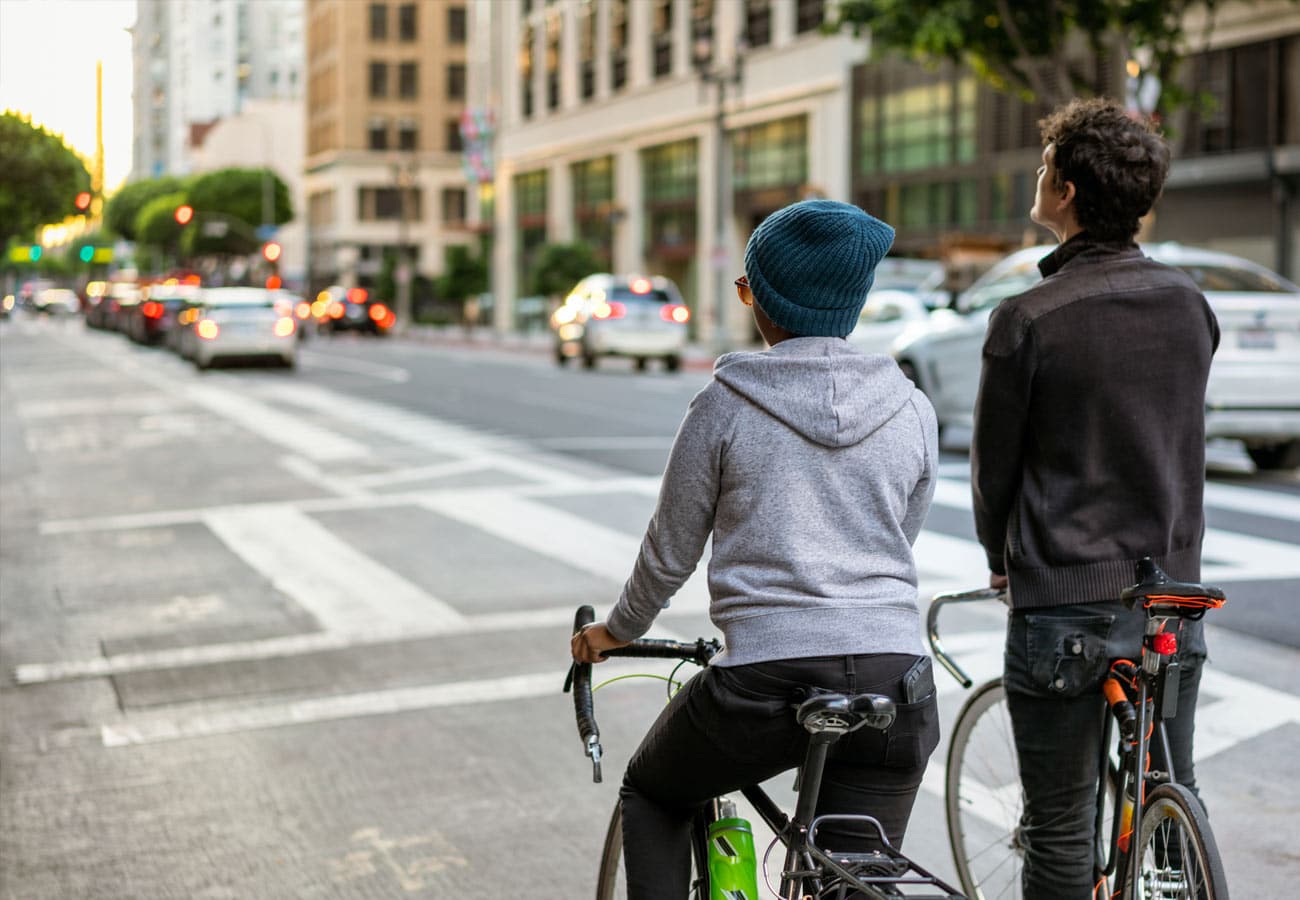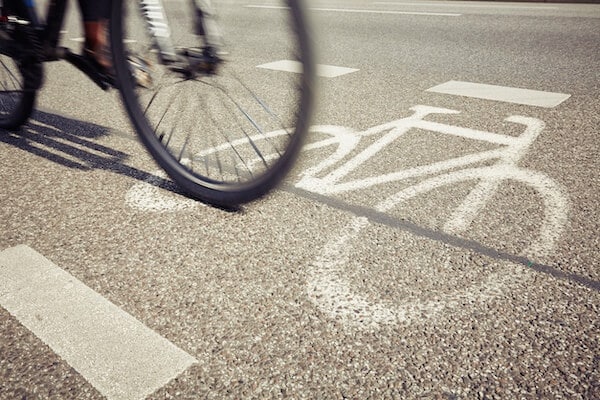In the hustle and bustle of our daily lives, intersections serve as crucial junctures where various modes of transportation converge. For cyclists, these intersections often pose significant risks, with potential hazards lurking at every turn. Whether you're a seasoned commuter or a leisurely weekend rider, the reality is that intersection bicycle accidents can happen in the blink of an eye, leaving behind a trail of confusion, injuries, and legal complexities.
At Blair & Ramirez LLP, we understand the gravity of intersection bicycle accidents and the paramount importance of determining liability in such cases. As legal practitioners specializing in personal injury law, we've witnessed firsthand the challenges faced by cyclists seeking justice and compensation following these harrowing incidents. Through this comprehensive guide, we aim to shed light on the intricate process of determining liability in intersection bicycle accidents, equipping you with the knowledge and insights needed to navigate the legal maze with confidence.
Understanding Intersection Bicycle Accidents
Before delving into the intricacies of liability, let's take a moment to understand the nature of intersection bicycle accidents. Picture this scenario: you're cruising along on your bicycle, approaching a busy intersection. As you reach the crossroads, a car suddenly makes a right turn without signaling, cutting you off and causing a collision. In an instant, you find yourself sprawled on the pavement, grappling with pain and shock.
Intersection bicycle accidents encompass a wide array of scenarios, ranging from right-of-way disputes to rear-end collisions and everything in between. These accidents often occur at intersections where vehicles and bicycles converge, presenting a myriad of potential dangers for cyclists. From distracted drivers to obscured sightlines and ambiguous traffic signals, the factors contributing to intersection bicycle accidents are as diverse as they are unpredictable.
What makes intersection bicycle accidents particularly perilous is the vulnerability of cyclists in these situations. Unlike motorists cocooned within the confines of a metal shell, cyclists are exposed to the elements, with nothing but a helmet and a thin layer of clothing offering scant protection against the forces of impact. As such, even minor collisions at intersections can result in severe injuries for cyclists, ranging from broken bones and concussions to spinal cord injuries and beyond.
Despite the inherent risks associated with intersection cycling, many cyclists rely on these routes to commute to work, run errands, or simply enjoy the freedom of the open road. However, the looming specter of accidents casts a shadow over these everyday journeys, underscoring the need for heightened awareness, caution, and vigilance when navigating intersections.
In the subsequent sections of this guide, we'll delve deeper into the legal intricacies of intersection bicycle accidents, exploring the relevant traffic laws and regulations, dissecting the factors influencing liability, and offering practical guidance for cyclists caught in the aftermath of an accident. By arming yourself with knowledge and understanding, you can empower yourself to protect your rights and seek recourse in the face of adversity.

A Closer Look
Types of Intersection Bicycle Accidents:
-
Right-of-Way Disputes: One of the most common scenarios involves disputes over the right-of-way. Cyclists and motorists may disagree on who has the legal right to proceed through the intersection, leading to collisions when both parties attempt to assert their perceived rights.
-
Left Turns: Another frequent occurrence is accidents involving left-turning vehicles. A driver making a left turn may fail to yield to an oncoming cyclist, resulting in a collision at the intersection.
-
Red-Light Running: Instances where cyclists or motorists disregard red lights at intersections can lead to devastating accidents. These violations of traffic signals often result in broadside collisions or T-bone accidents, where the impact occurs on the side of the vehicle or bicycle.
-
Failure to Stop or Yield: Accidents can also occur when drivers fail to come to a complete stop at stop signs or yield signs, especially when cyclists are already in the intersection.
-
Dooring Incidents: In urban areas, doorings—when a parked car's door is suddenly opened into the path of an oncoming cyclist—can occur near intersections, resulting in serious injuries for cyclists.
Factors Contributing to Intersection Bicycle Accidents:
-
Driver Distraction: With the proliferation of smartphones and other gadgets, driver distraction has become a significant contributing factor to intersection bicycle accidents. Texting, talking on the phone, or even adjusting the radio can divert a driver's attention away from the road, increasing the likelihood of collisions with cyclists.
-
Poor Visibility: Inadequate lighting, obstructed sightlines, and inclement weather conditions can impair visibility at intersections, making it challenging for both cyclists and motorists to see each other in time to avoid accidents.
-
Speeding: Excessive speed can exacerbate the severity of intersection bicycle accidents, reducing the time available for drivers to react to changing conditions and increasing the force of impact in the event of a collision.
-
Failure to Signal: Failing to signal intentions, such as turning or stopping, can lead to confusion and misinterpretation among other road users, potentially resulting in accidents at intersections.
-
Inadequate Infrastructure: In some cases, poorly designed or maintained intersections can contribute to accidents. Lack of bike lanes, unclear signage, and improperly timed traffic signals can create hazardous conditions for cyclists navigating intersections.
Relevant Traffic Laws and Regulations: Navigating Intersection Dynamics
Overview of Traffic Laws and Regulations:
-
Bicyclist Rights and Duties: In many jurisdictions, bicyclists are considered legitimate road users with rights and responsibilities comparable to those of motorists. This includes the obligation to obey traffic signals, signs, and lane markings, as well as yielding to pedestrians in crosswalks.
-
Traffic Control Devices: Traffic signals, stop signs, yield signs, and other traffic control devices play a crucial role in regulating the flow of traffic at intersections. Bicyclists are typically required to adhere to these devices just like motorists, obeying red lights, stopping at stop signs, and yielding when necessary.
-
Lane Positioning: Bicyclists are generally entitled to use the full width of a lane when necessary for safety, including when preparing to make a left turn, avoiding hazards, or passing slower-moving vehicles. However, they are also expected to ride as far to the right as practicable, except when preparing for a left turn, avoiding hazards, or when the lane is too narrow to share safely with a motor vehicle.
-
Right-of-Way Rules: Determining who has the right-of-way is essential in preventing intersection conflicts and accidents. Generally, cyclists must yield to pedestrians in crosswalks, while at intersections, the right-of-way may be governed by factors such as traffic signals, signs, or the order of arrival at a four-way stop.
-
Turning Rules: Both cyclists and motorists must adhere to specific turning rules when navigating intersections. For example, motorists making a right turn must yield to cyclists traveling straight through the intersection, while cyclists making left turns must yield to oncoming traffic unless otherwise directed by traffic signals.
Jurisdiction-Specific Considerations:
Enforcement and Education:
In addition to understanding the relevant traffic laws and regulations, both cyclists and motorists can benefit from ongoing enforcement efforts and educational initiatives aimed at promoting safe behavior at intersections. Law enforcement agencies may conduct targeted enforcement campaigns to crack down on dangerous behaviors such as running red lights or failing to yield, while educational programs can raise awareness about the rights and responsibilities of cyclists and motorists alike.
By familiarizing themselves with the applicable traffic laws and regulations, cyclists and motorists can mitigate the risk of intersection bicycle accidents and foster a culture of mutual respect and cooperation on the roadways. In the subsequent sections, we'll delve deeper into the factors influencing liability in intersection bicycle accidents, examining the roles of negligence, contributory fault, and legal precedents in determining responsibility for these complex incidents.

Factors Influencing Liability
Key Factors in Liability Determination:
-
Negligence: Central to any discussion of liability in intersection bicycle accidents is the concept of negligence. Negligence occurs when a party fails to exercise reasonable care, thereby causing harm to another individual. In the context of intersection accidents, negligence may manifest in various forms, such as distracted driving, failure to yield, speeding, or disregarding traffic signals.
-
Right-of-Way Violations: The issue of right-of-way is often pivotal in determining liability. Both cyclists and motorists are expected to adhere to established right-of-way rules at intersections, and violations of these rules can result in collisions. For example, a motorist who fails to yield to a cyclist with the right-of-way or a cyclist who disregards a stop sign may be deemed negligent and thus liable for any resulting accidents.
-
Contributory Fault: In some cases, liability for an intersection bicycle accident may be shared between multiple parties due to contributory fault. Contributory fault occurs when both the cyclist and the motorist contribute to the occurrence of the accident through their actions or omissions. For instance, if a cyclist fails to use hand signals when turning or a motorist fails to check their blind spot before making a right turn, both parties may be deemed partially responsible for the collision.
-
Evidence and Witness Testimony: The availability and reliability of evidence, such as eyewitness accounts, surveillance footage, and accident reconstructions, can significantly impact liability determination. Strong corroborating evidence supporting one party's version of events may sway the outcome of a liability dispute in their favor. Conversely, the absence of compelling evidence or conflicting witness testimony may result in a more complex and contested liability assessment.
-
Statutory Violations: Violations of relevant traffic laws and regulations can serve as compelling evidence of negligence and liability. For example, a motorist who runs a red light or a cyclist who rides against traffic may be deemed negligent per se, meaning that their violation of a statutory duty establishes their liability for any resulting accidents, absent extenuating circumstances.
-
Extent of Damages: The severity of injuries and property damage resulting from an intersection bicycle accident can also influence liability determination. Courts may consider factors such as medical expenses, lost income, pain and suffering, and long-term disability when assessing the extent of damages and apportioning liability accordingly.
Case-by-Case Analysis:
Legal Precedents and Trends:
Furthermore, legal precedents and trends in case law may inform liability determinations in intersection bicycle accidents. Past court decisions addressing similar fact patterns or legal issues can provide guidance on how courts are likely to rule in a given situation, helping to establish clearer standards and expectations for liability assessment.
By carefully examining the factors influencing liability in intersection bicycle accidents, individuals can better understand their rights and responsibilities in these complex scenarios. In the subsequent sections, we'll explore the concepts of comparative negligence and contributory fault in more detail, shedding light on how these legal doctrines impact liability assessment and compensation recovery for accident victims.
Comparative Negligence and Contributory Fault
Understanding Comparative Negligence:
Comparative negligence is a legal doctrine employed in many jurisdictions to address cases where multiple parties share responsibility for an accident. Under this doctrine, each party's degree of fault is assessed, and liability is allocated proportionally based on their respective contributions to the accident. In essence, comparative negligence allows for a nuanced and individualized approach to liability determination, taking into account the specific circumstances of each case.
For example, suppose a cyclist fails to stop at a stop sign while a motorist is simultaneously distracted by a mobile phone conversation. If the cyclist is found to be 60% at fault for the accident, while the motorist is deemed 40% at fault, the cyclist may still be entitled to recover damages from the motorist, albeit reduced by their degree of fault.
Contributory Fault and its Implications:
Contributory fault operates on a similar principle to comparative negligence but may have different legal implications depending on the jurisdiction. Under a contributory fault regime, if a party is found to have contributed in any way to the occurrence of an accident, they may be barred from recovering any damages from the other party, regardless of the extent of their fault.
For instance, in jurisdictions that adhere to a pure contributory fault rule, if a cyclist is found to be even 1% at fault for an intersection accident, they may be precluded from recovering any compensation from a negligent motorist. This strict approach to fault allocation underscores the importance of exercising caution and adhering to traffic laws to avoid potential legal repercussions.
Application in Intersection Bicycle Accidents:
Importance of Legal Representation:
Given the intricacies of comparative negligence and contributory fault analysis, seeking legal representation from an experienced attorney is crucial for individuals involved in intersection bicycle accidents. An attorney can advocate on behalf of their client, gathering evidence, negotiating with insurance companies, and navigating the complexities of the legal system to secure fair compensation for their injuries and losses.
By understanding the concepts of comparative negligence and contributory fault, individuals can better comprehend the nuances of liability determination in intersection bicycle accidents and the potential implications for their legal rights and obligations. In the subsequent sections, we'll explore real-life case studies and legal precedents to illustrate how these legal doctrines are applied in practice, shedding light on the outcomes of intersection bicycle accident cases.
Steps to Take After an Intersection Bicycle Accident:
Immediate Actions:
-
Ensure Safety: The first priority after an accident is to ensure the safety of yourself and others involved. If possible, move to a safe location away from traffic to avoid further harm.
-
Seek Medical Attention: Even if you don't believe you've sustained serious injuries, it's crucial to seek medical attention promptly. Some injuries, such as concussions or internal bleeding, may not be immediately apparent but can have serious consequences if left untreated.
- Document the Scene: Take photographs of the accident scene, including vehicle damage, road conditions, traffic signs, and any visible injuries. This visual evidence can serve as crucial documentation for insurance claims and legal proceedings.
-
Exchange Information: Exchange contact and insurance information with the other parties involved in the accident, including motorists, cyclists, and pedestrians. Be sure to obtain names, phone numbers, addresses, license plate numbers, and insurance policy details.
-
Contact A Lawyer: After a bicycle accident, it's crucial to contact a lawyer promptly to protect your rights, navigate legal complexities, and seek compensation for injuries and damages incurred.
Post-Accident Considerations:
-
Notify Your Insurance Provider: Contact your insurance provider as soon as possible to report the accident and initiate the claims process. Provide them with all relevant details and documentation, including the police report, medical records, and photographs of the accident scene.
-
Consult with a Legal Professional: Consider seeking legal representation from an experienced personal injury attorney who specializes in bicycle accidents. An attorney can assess the merits of your case, provide guidance on your legal rights and options, and advocate on your behalf throughout the claims process.
-
Preserve Evidence: Preserve any physical evidence related to the accident, such as damaged bicycle parts, clothing, or personal belongings. Additionally, keep detailed records of all medical expenses, lost wages, and other accident-related costs incurred.
Long-Term Considerations:
-
Follow Medical Recommendations: Follow your healthcare provider's recommendations for treatment and rehabilitation. Attend all scheduled medical appointments and adhere to prescribed therapies to maximize your recovery.
-
Know Your Rights: Familiarize yourself with your rights under the law, including your right to pursue compensation for damages such as medical expenses, lost income, pain and suffering, and property damage. An attorney can help you understand your legal options and pursue the compensation you deserve.
-
Stay Informed: Stay informed about developments in your case, including any updates from your insurance provider, legal counsel, or the other parties involved. Ask questions if you're unsure about any aspect of the claims process or legal proceedings.
By taking these proactive steps after an intersection bicycle accident, you can protect your well-being, preserve crucial evidence, and position yourself for a successful resolution of your case. Remember, you don't have to navigate the aftermath of an accident alone—seeking guidance from experienced professionals can help ensure that your rights are protected and your interests are represented effectively.



